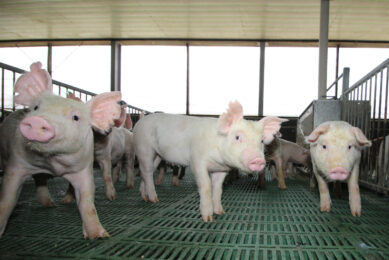US: Pork exports trend lower

March pork exports slumped on lower results in several mainstay markets, while US beef were down in volume from a year ago but edged slightly higher in value.
March pork exports declined 18 percent from a year ago in both volume (163,004 mt) and value ($469.5 million), hampered by a beta agonist-related market closure in Russia, larger domestic supplies in China and South Korea and weakened demand in top markets Japan and Mexico. For the first quarter, pork exports fell 12 percent below last year’s record pace in volume (528,195 mt) and 11 percent in value ($1.49 billion).
“We are definitely facing a challenging environment in several of our leading markets,” said USMEF President and CEO Philip Seng. “Some of these trends are anticipated, such as the lower demand for exports where domestic production is up and inventories are plentiful. But the trade impasse with Russia is very frustrating because we have lost access to a market where demand for our product is extremely strong. In other destinations we have seen the overall demand for high-quality proteins become sluggish, and USMEF is very focused on reversing this trend.”
March beef exports equated to 9 percent of U.S. muscle cut production and 12 percent when adding variety meat – ratios consistent with a year ago. Export value equated to $222.20 per head of fed slaughter, up from 9 percent in March 2012. First quarter export value was $221, also an increase of 9 percent.
Pork exports accounted for 20 percent of muscle cut production in March and 23.4 percent including variety meat. This is down from 24 percent and 27.8 percent, respectively, in March 2012. March export value equated to $50.38 per head, down from $59.92 in March 2012. First-quarter export value averaged $53.38 per head, down 10 percent from a year ago.
Slowdown in key markets hampers pork exports
Coming off a record year in which pork exports to Japan reached nearly $2 billion and export value to Mexico topped $1.1 billion, demand in both markets has slowed in 2013. Along with the shutdown of the Russian market – ranked No. 6 in export value last year at $281.7 million – this hindered U.S. pork’s global performance in the first quarter despite gains in smaller, emerging markets.
Compared to the first quarter of 2012, pork exports to Japan fell 12 percent in volume (108,313 mt) and 9 percent in value ($482.5 million), partially as a result of the weaker yen. Exports to Mexico declined 15 percent in volume (137,506 mt) and 16 percent in value ($252.8 million).
Exports to Russia were down 62 percent in both volume (5,646 mt) and value ($17.5 million). Larger exports to neighboring countries, especially Ukraine, helped the overall performance in the Greater Russia region but exports were still down 41 percent in volume (9,221 mt) and 44 percent in value ($27.1 million).
Large domestic inventories impacted pork exports to China/Hong Kong (104,109 mt, -10 percent, valued at $219.5 million, -7 percent) and South Korea (34,841 mt, -35 percent, valued at $96.1 million, -38 percent). China’s domestic pork prices recently dropped to the lowest level in more than two years despite a stockpiling program aimed at stabilizing the market. A voluntary herd-culling program initiated by the Korean government in an effort to boost domestic prices has also yielded disappointing results, creating a difficult environment for imported pork from all sources. According to the Global Trade Atlas, Korea’s total pork imports fell 27 percent in volume and 35 percent in value in the first quarter. Despite the decline in imports from the United States, U.S. market share has increased in 2013.
Pork exports to several Western Hemisphere markets posted positive first-quarter results. Examples include:
• Exports to Canada increased 4 percent in volume to 58,162 mt and 3 percent in value to $205.3 million.
• Bolstered by the recently implemented free trade agreement, exports to Colombia jumped 57 percent in volume to 5,325 mt and 45 percent in value to $13.7 million. It was the leading volume market in the Central-South America region, where exports increased 16 percent in volume (23,843 mt) and 12 percent in value ($59.9 million). Chile was the region’s leading value market at $14.1 million (+15 percent).
• Exports to the Dominican Republic increased 9 percent in volume to 3,795 mt and 16 percent in value to $9 million.
Asia’s first-quarter bright spot was the ASEAN region, where exports increased 37 percent in volume to 14,408 mt and 29 percent in value to $35.5 million. This was driven in large part by outstanding performance in the Philippines, where export volume increased 57 percent to 11,739 mt, valued at $28.1 million (+44 percent).
– Export statistics refer to both muscle cuts and variety meat unless otherwise noted
– One metric ton (mt) = 2,204.622 pounds
For more info on beef and lamb exports: usmef.org











